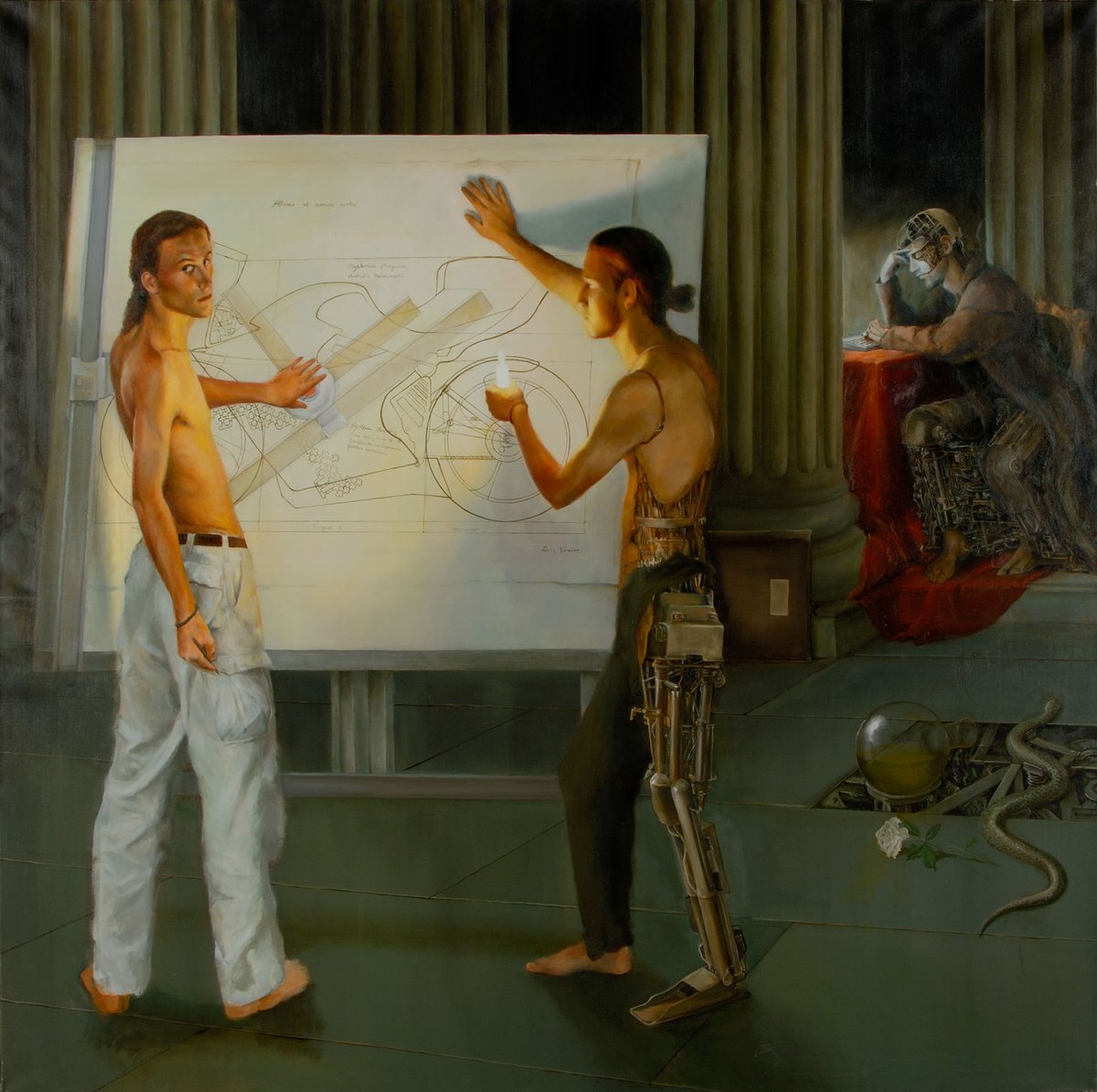JANOS KOSA “PAINTER ROBOTS”
HAPPENINGText: Mark Griffith
What makes this interesting is that in many ways Hungary has been a culture at the heart of the 20th-century love affair with the computer. Perhaps as important as Alan Turing, Hungarian mathematician Janos von Neumann took time off from developing game theory to help the Princeton team create the early valve-based computers ENIAC and IAS in the 1940s.
Neumann’s suggestion that memory be held outside the processing unit shaped almost all computer design up until the days of supercomputers and parallel processing in the 1980s, and still influences construction of most computers in use today. Something about Hungary – whether it is the language’s pedantic grammar or the country’s math-focussed school education system – still produces lots of programmers.

Mystery of Design, János Kósa, 2000, Painting, oil on canvas, 180 × 180 cm, Collection: Hungarian National Gallery
Kosa is having none of that. Or so he thinks. These poignantly heartfelt yet derivative paintings aim to contrast what Kosa intends as warmth and emotion with the coldness and inhumanity of the computer. But on a closer look something else is happening.
His human characters are stiff and cliched – these visual images supposed to evoke in us feelings of humanity and emotion in fact stand around in dull assemblages of borrowed imagery. The people in Kosa’s paintings are in fact as much lifeless, listed symbols as any of the code in the computing devices he hates and fears.
Any claim that this only shows how computers have dehumanised the humans in each picture should make us suspicious. If Kosa does not mean to contrast human and inhuman in each picture, if he does not mean to smuggle computer coldness into what at first look like comfortingly familiar historic celebrations of humanity, then the pictures are even more confused than they first appear. The attractive young women are clearly meant to look attractive to us – and not to look as average or dull as they actually do.

Drawing, János Kósa, 2000
If the contrast is intended to be human versus machine, then we must ask why the people look so mechanical, and just …. unimaginatively and imitatively painted? Kosa definitely has something he wants to say, but it is hardly a visual message.
These pictures suggest to me that in another life Janos Kosa might have been a much better machine-code scripter than he is a painter. A glance through these literal-minded, almost verbal, pictures helps to explain just why Hungary has been so weak in the visual arts and so strong in linear thinking – such as mathematics and computing itself.
Which makes the exhibition very much worth going to see. What they show about the difference between the linear and the visual is, for my money, a lot more interesting than what Kosa hopes to persuade us.
János Kósa “Painter – Robots”
Date: March 2nd – April, 2001
Place: Deak Erika gallery
Address: Budapest, Mozsár u. 1, 1066 Budapest, Hungary
Tel: +36 1 201 3740
https://www.deakerikagaleria.hu
Text: Mark Griffith




